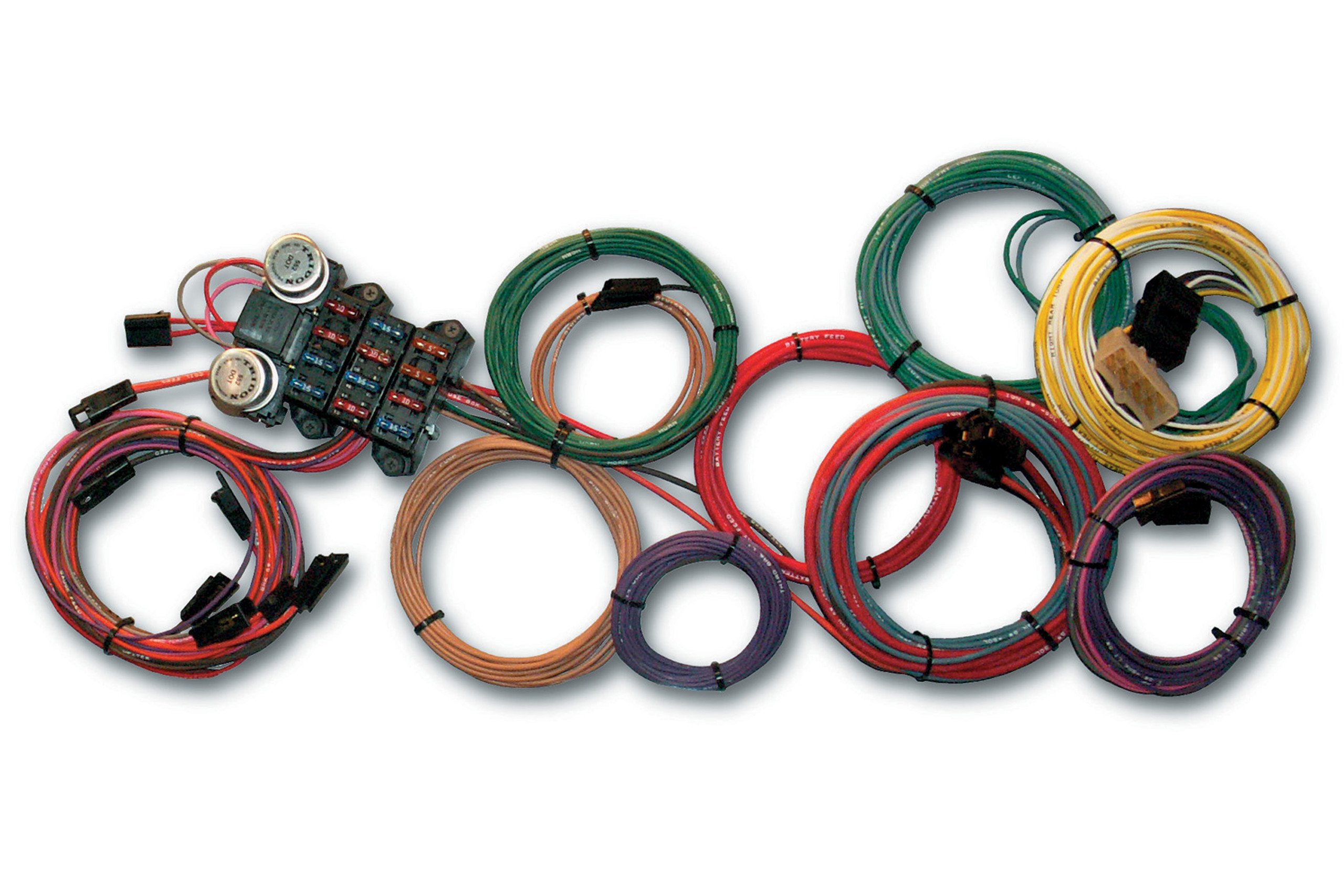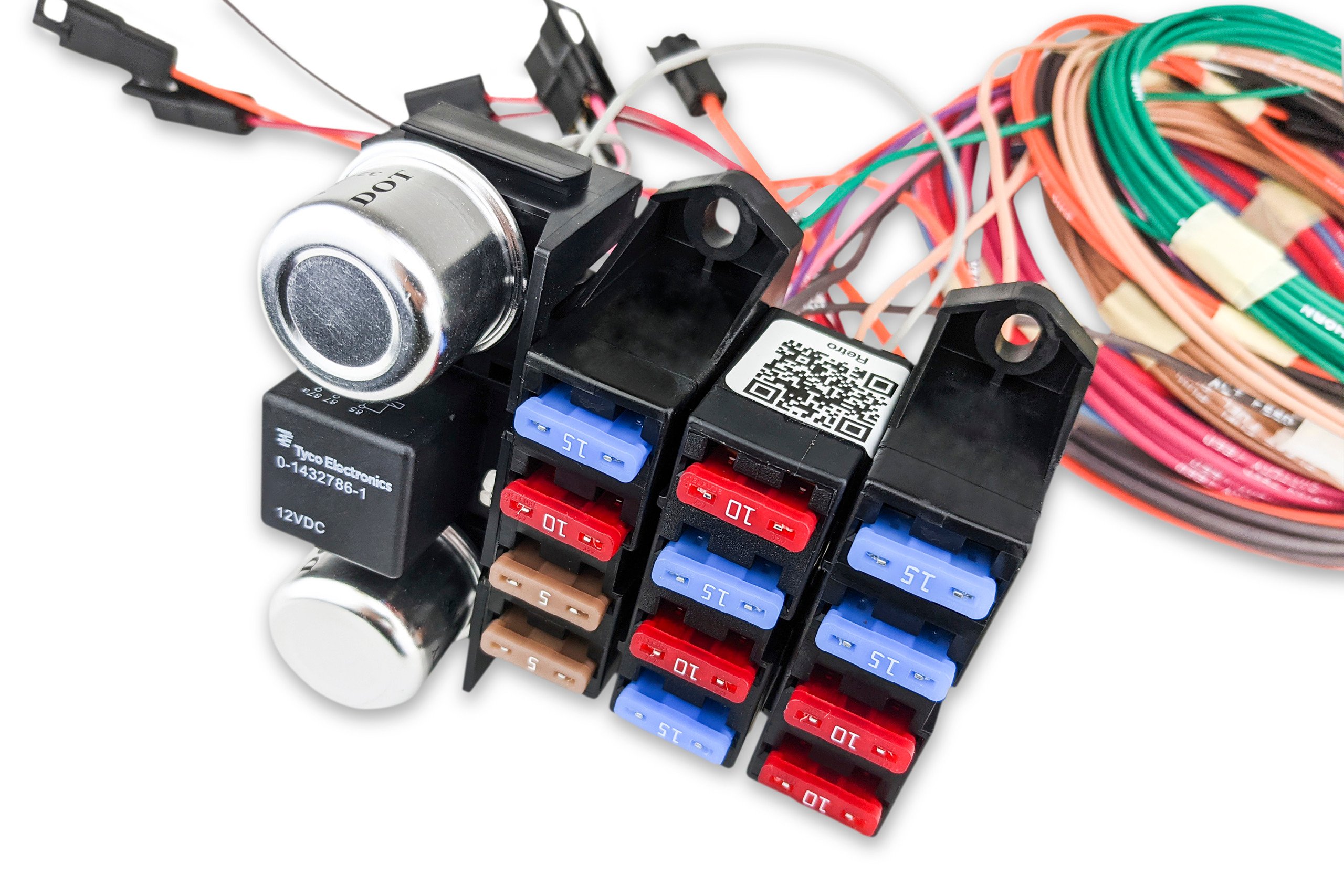How many times have you wanted to take your classic Chevy for a drive, only to be hopelessly stuck in the garage because your car will not start? Maybe it will start, but the gauges and lights are practicing a synchronized operation of failure. Worse yet, you get to your destination only to find out you will not be able to get home? All of these scenarios sound like the issue can be traced back to some portion of your car’s wiring harness. It’s understandable. The cars we love are 40, 50, and 60 years old, and nothing lasts forever. Add into the equation that multiple owners have likely hacked the wiring in some fashion, it stands to reason that it might be time for an upgrade.
But with all the options available, how do you know which is best for your car? We decided to find one source for all things wiring, so you guys can see the options available to you. That source turned out to be Ron Francis Wiring. I know what you’re thinking, the products offered by this company are universal and designed for street rods. While the street rod market is a big part of the Ron Francis portfolio, muscle cars are equally covered.
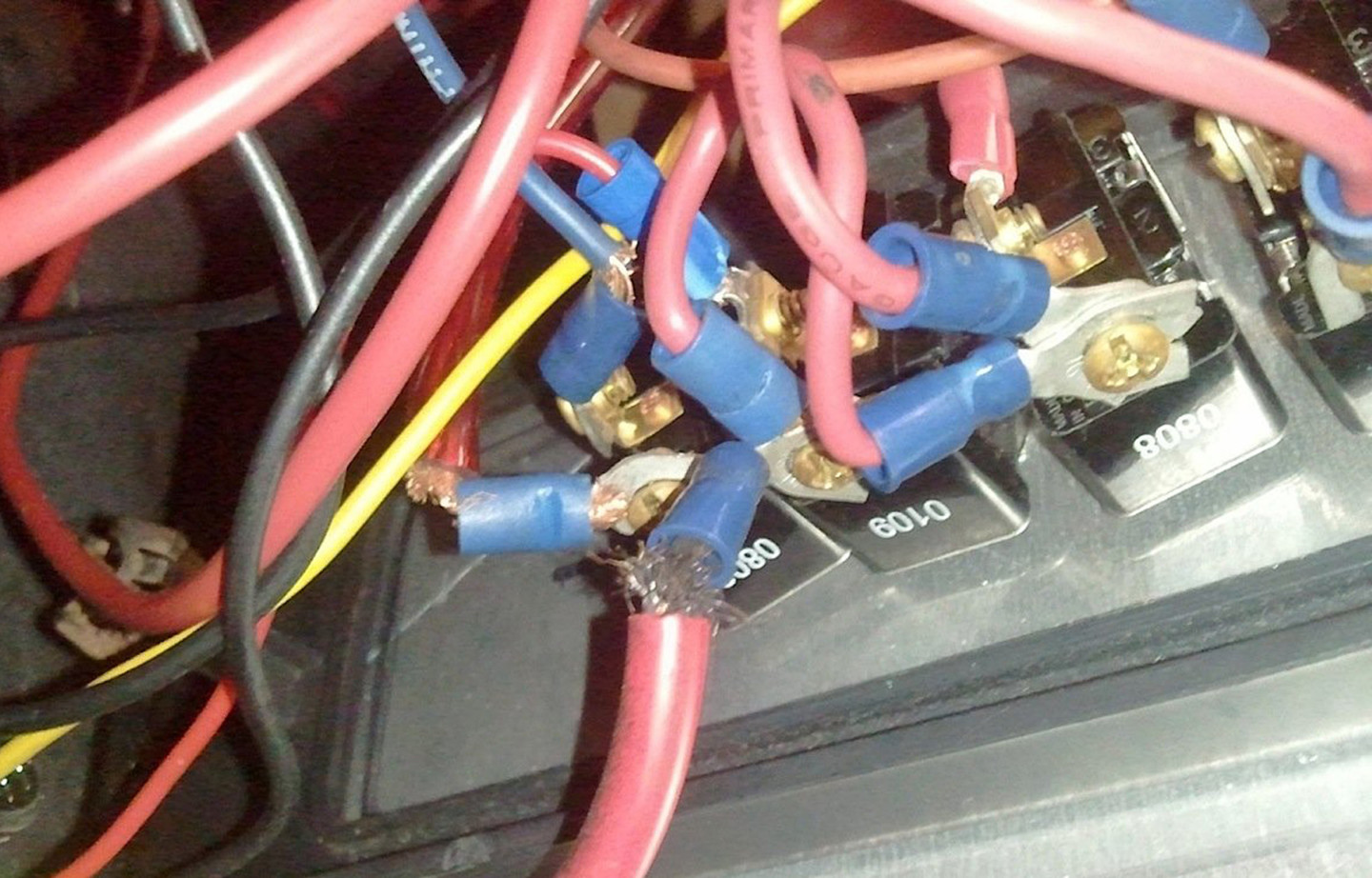
Years of bad crimps, sub-par connections, and aging wires can mean it’s time to swap out that old wiring harness.
Unless your car has been the recipient of an OE restoration, is a factory wiring harness really your best option? Here’s something to ponder: Your car’s original electrical system was designed to handle less amperage draw than one modern electric fan and high-output stereo use to operate. Think about that, your wire harness is probably overloaded just by adding a better radio and electric cooling fan. Add into the mix an electric fuel pump, and a high-zoot ignition, and a meltdown is in the near future.
The OE-Esque Wiring Harness Options
I reached out to Scott Bowers of Ron Francis Wiring, wanting to know what recommendations he could give to those looking to replace an entire wiring harness in a muscle car. “The biggest consideration is what sort of accessories might be in store for the project vehicle in the coming years. Carefully considering power accessories such as power windows/seats/door locks, as well as electric fuel pumps and fans will determine the number of fused circuits that will be required.”
I found a couple of muscle car wiring harness options on the Ron Francis website that will cover almost all enthusiasts. The first kit is the Retro Series, and the second is the Model-Specific Express Series. Having options is great, but now you might be wondering, “which wiring harness should I buy”? In actuality, the answer is easy to realize, as it comes down to one consideration; how many circuits do you need to power? This is actually easy to discern when ordering a wiring harness. All you need to do is make a list of all the electrical components you plan to utilize in the car, including any electrical items you plan to add in the future.
Going Retro For Muscle Car Wiring
If you are planning to install your new muscle car wiring harness into a car with the basic amenities, you might want to check out The Retro Series. This harness is the closest of the two in OE appearance. However, it does use blade (ATO-type) fuses as opposed to glass fuses. This is a 12-circuit (12 fuses) model that is almost completely pre-wired. This harness is ready for use in cars utilizing an OE or high-output alternator and will wire your turn signals, headlights, tail lights, brake lights, gauges/senders, engine (starter, alternator, distributor), ignition switch, headlight switch, dimmer switch, third brake light, and license plate light.
While the Retro series is a close comparison to the OE appearance, it features modern blade fuses and that's not a bad thing. All wires extend from the fuse box and are long enough to reach all your accessories.
This is not a universal harness, as wire lengths are predetermined. This is designed to fit the car in which it is ordered. The wires are clearly printed showing the function of each wire and the terminals and connectors are installed on most of the wires and are ready to connect to the electrical devices. I priced one for a 1970 Chevelle, and the total came to $319.95.
Express(ly) Flowing More Juice To More Places
If you are looking for a more inclusive muscle car wiring system that will feed current to more accessories, the Model-Specific Express Series might be what you need. With 16 fuses this box will take care of 18 to 20 circuits. This custom wiring system is built for your car or truck and includes all the connectors and wiring necessary to drive it, pass inspection, and be able to add accessories as you see fit, now and in the future.
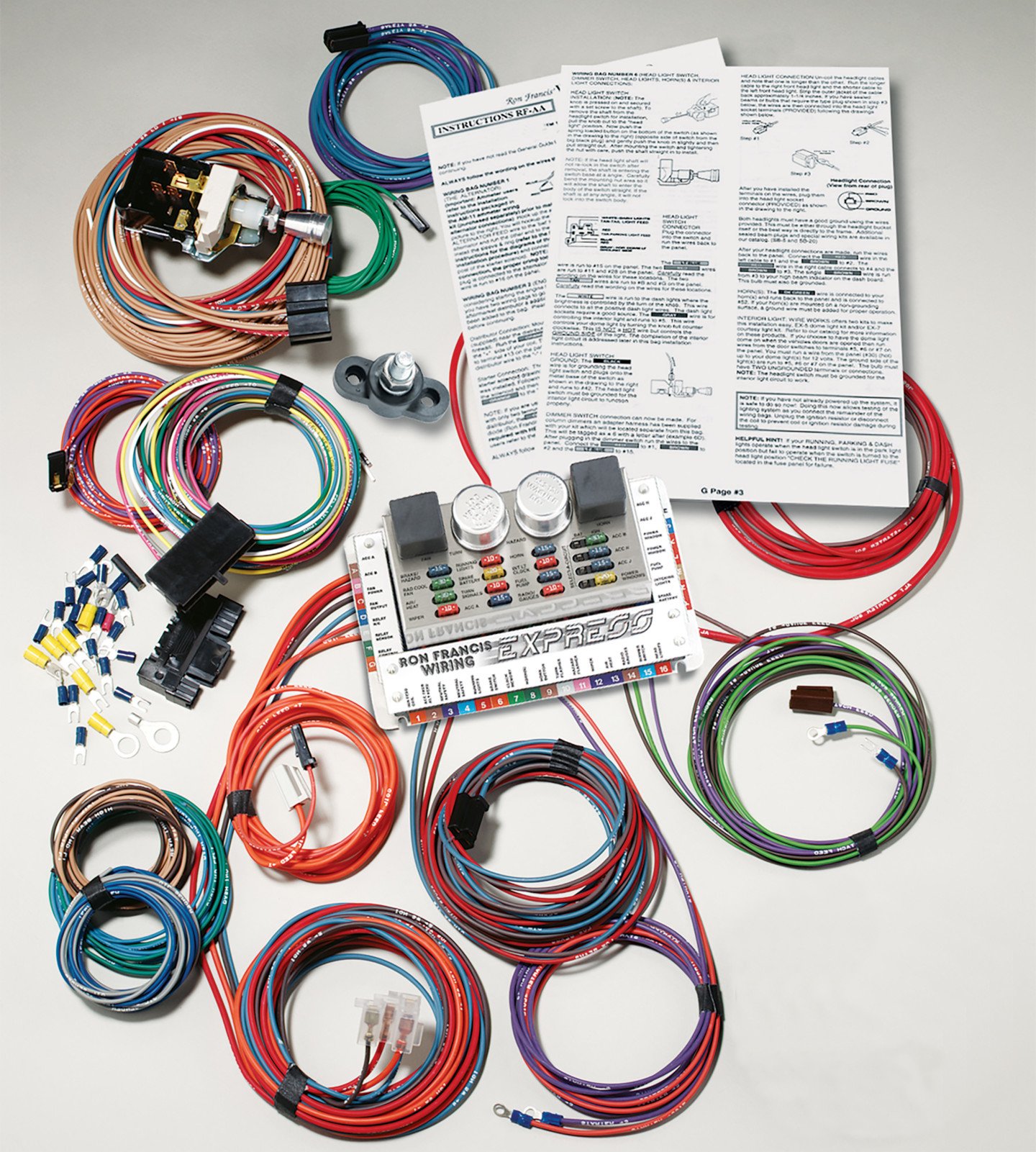
The Express fuse panel is a system that fits many applications. If you order the model-specific kit, it comes with wiring that is ready to connect to your accessories. Once the wires are plugged in, simply run them to the fuse panel – no matter where you mount it.
The Express panel box is not an OE-appearing unit and is designed for custom wiring applications. The wires are not connected to the panel box, and that allows mounting in nearly any location. Ron Francis even has an extended-wire upgrade you can purchase so you can even install the fuse panel in the trunk if desired. By ordering the Model-Specific Kit, you get all of the connectors and wiring that you need for your car, including those for the starter, alternator, and steering column.
However, this is not a “basic” harness. Included are cooling fan relays and a multi-connection battery junction block to reduce the number of wires going to the starter for all those add-ons in your custom application. When I priced one of these harnesses for a 1970 Chevelle, the total came to $509.95. While this is a more expensive option, it does take care of more accessories. I do need to let you know the fuse panel does not resemble OE in any way, but if you are mounting it under the dash, no one will ever see it anyway. But, if you want location options for mounting the fuse panel, this kit is for you.
OE Wiring Harness Add-ons
Maybe the wiring harness in your classic ride is in fine condition. Maybe, you just need to add a few non-OE accessories like electric fans or even an electric fuel pump to your ride. Let it be clear, there is a right way and there is a wrong way.
“Upgrading the current electrical system is certainly an option if it’s in good shape,” affirms Scott. “There are numerous ways to add circuits, from additional fuse blocks and circuit breaker systems to additional relays/fuses for high-current items such as fans and fuel pumps.”
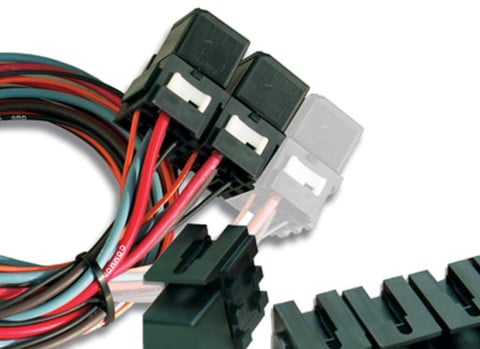
Adding relays to control items like electric fuel pumps and fans is a great way to reduce the load placed on your existing harness.
As an example, if you wire your electric fuel pump directly to the ignition system, you will at some point have issues. This will likely result in the fuel pump surging, which raises and lowers the amp draw. This fluctuating draw can damage other components if on the same circuit. By installing a relay for the pump, you eliminate the surges that might disturb other electronic devices like radios and other electronic accessories. A relay system supplies full battery voltage to the pump at all times, removes the main connection from an existing circuit, and comes with its own fuse.
Scott also feels that relays are good for use in other circuits as well. “For moderate to high-amperage items, absolutely yes, relays are a good idea. First of all, main power feeds connected to fuse blocks may not be sized properly for high-amperage items. Secondly, if you simply fuse a switched power item that is high amperage, you are most likely bringing that load through an ignition switch.”
Scott continues, “For example, let’s say you decide to add a fuel pump connection to a fuse block where a circuit is hot when the key is on, and not use a relay. That circuit utilizes the ignition switch for power. What you’re doing is asking the ignition switch to carry the additional load of that fuel pump. If you ask the ignition switch to carry the load of too many items, it will fail prematurely. That’s the beauty of adding a relay. The ignition switch just activates the relay — which is a very low load. The big load is carried from the battery, through the relay, to the power accessory.”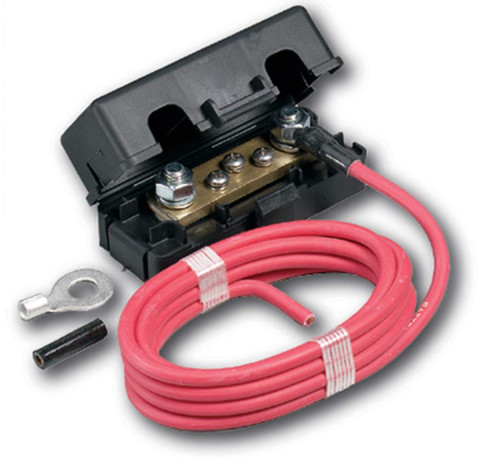
Block The Load
If you plan to add multiple electrical accessories to your ride, maybe a distribution block is a good idea. I asked Scott if a distribution block can help in certain situations. “That depends on what it’s for. If we’re talking about a fused distribution block, it helps by properly fusing individual items. If it’s just a distribution block, it can clean up the wiring. For example, we offer a distribution block that will relocate main battery feeds that would usually get stacked up on a starter solenoid where the battery cable attaches. This should clean up the visible wiring and give you a more convenient place to grab that power.”
Updating the wiring in your classic might seem like a daunting task, but you can do this. If you methodically follow the instructions and break the job down into sections (engine harness, front of car, rear of car, and interior) will make the job much easier and less nerve-wracking. In fact, if you only unravel the section of wiring you will be working with, it makes it look as simple as it really is.

